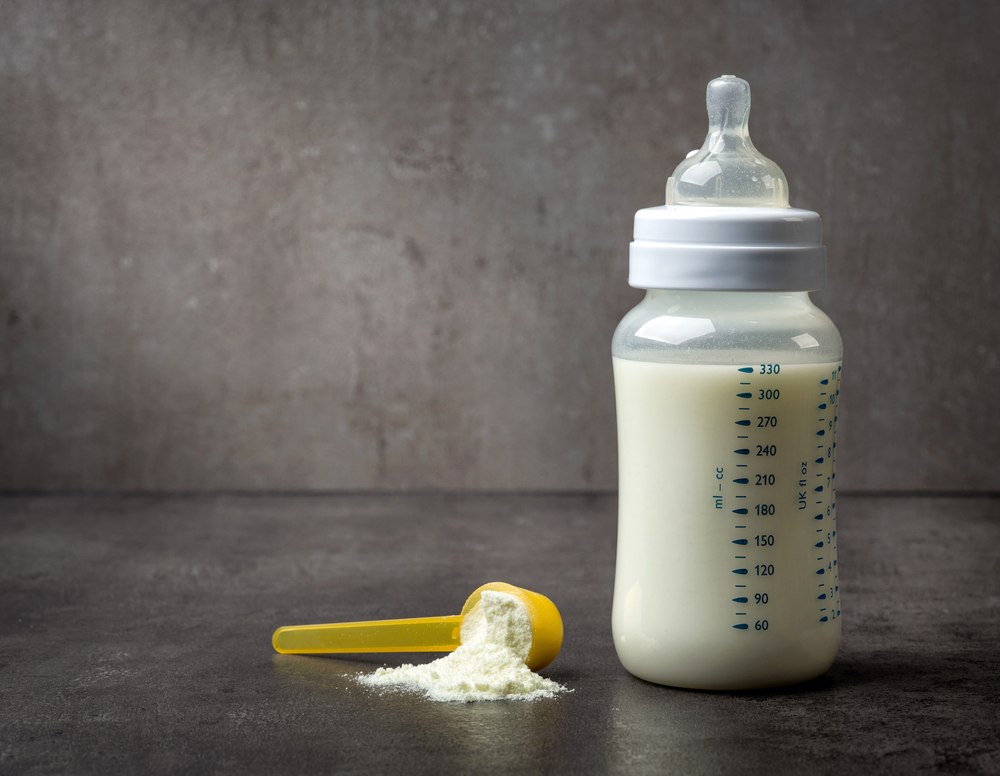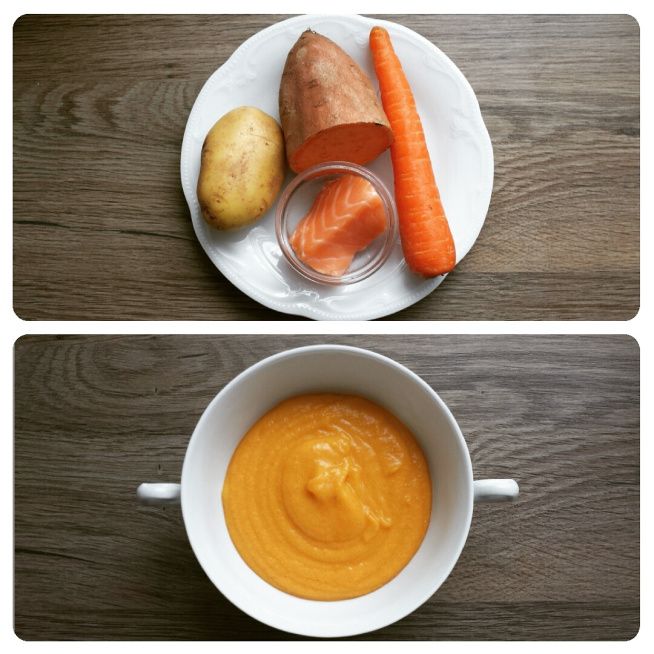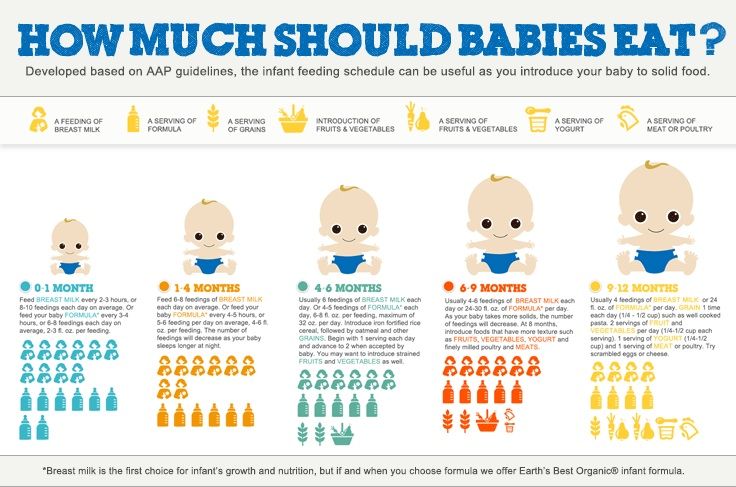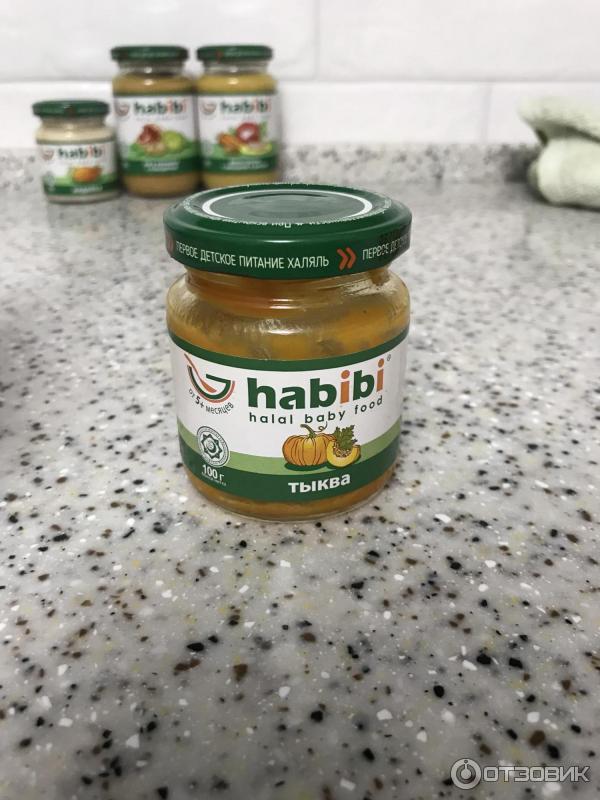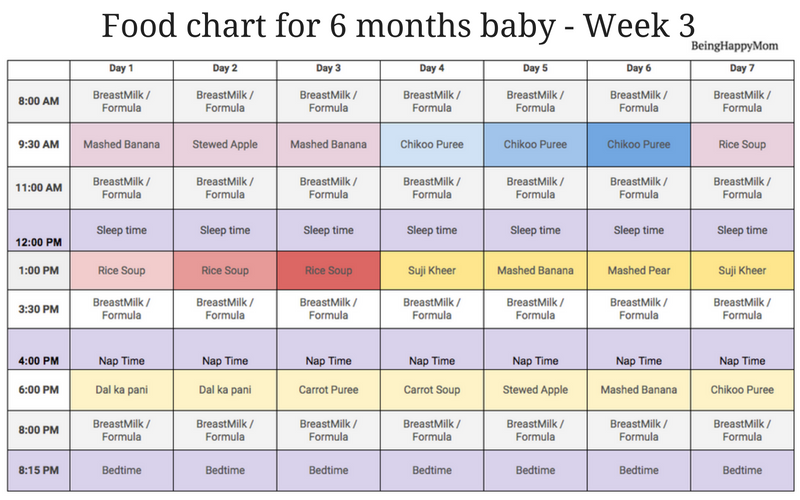Breastfed baby and bottle feeding
How to combine breast and bottle feeding
It can take several weeks for you and your baby to feel happy and confident with breastfeeding.
Once you've both got the hang of it, it's usually possible to offer your baby bottles of expressed milk or formula alongside breastfeeding.
This is sometimes called mixed or combination feeding.
Why combine breast and bottle?
You may want to combine breastfeeding with bottle feeding if you:
- are breastfeeding and want to use a bottle to offer your baby some expressed breast milk
- want to breastfeed for some of your baby's feeds, but give bottles of formula for 1 or more feeds
- are bottle feeding your baby and want to start breastfeeding
- need to leave your baby and want to make sure they have some milk while you're away
Introducing formula feeds can affect the amount of breast milk you produce. There is also a small amount of evidence to show babies may not breastfeed as well because they learn to use a different kind of sucking action at the bottle than at the breast.
These things can make breastfeeding more difficult, especially in the first few weeks when you and your baby are still getting comfortable with breastfeeding.
Your breastmilk supply will usually not be affected if you start bottle feeding your baby when they are a bit older, you are both comfortable with breastbeeding, and you breastfeed every day.
Introducing formula feeds
If you're combining breastfeeding with formula feeds both you and your baby can carry on enjoying the benefits of breastfeeding.
If you choose to introduce infant formula:
- it's best to do it gradually to give your body time to reduce the amount of milk it makes – this helps lower your chance of getting uncomfortable, swollen breasts, or mastitis
- if you're going back to work, start a few weeks beforehand to give both of you time to readjust
- if your baby is 6 months old or more and can drink milk from a cup, you may not need to introduce a bottle at all
For more information, see drinks and cups for babies.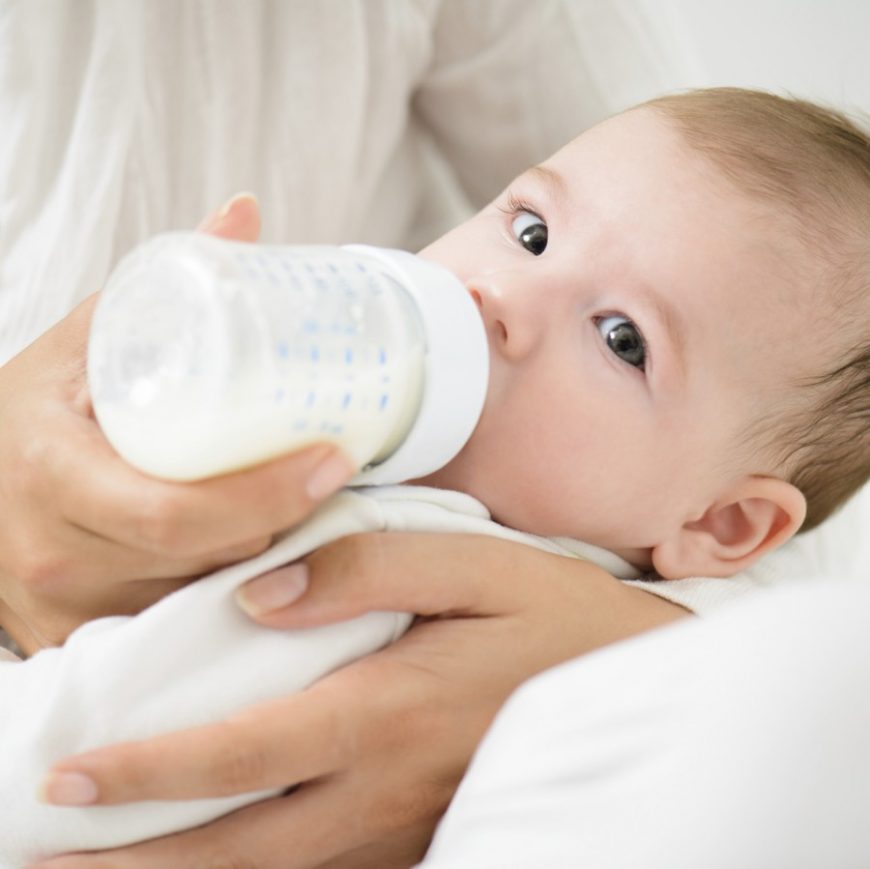
Giving your baby their first bottle
It may take a while for a breastfed baby to get the hang of bottle feeding, because they need to use a different sucking action.
- it usually helps to give the first few bottles when your baby is happy and relaxed – not when they're very hungry
- it may help if someone else gives the first bottle feeds, so that your baby is not near you and smelling your breast milk
- you might want to try using a different position for bottle and breastfeeding
See more advice on how to bottle feed.
Restarting breastfeeding
If you want to start breastfeeding more and give your baby fewer bottles, it's a good idea to ask your midwife, health visitor or breastfeeding supporter for support.
These tips may help too:
- Hold and cuddle your baby as much as possible, ideally skin to skin. This will encourage your body to make milk and your baby to feed.

- Express your breast milk regularly. Expressing releases the hormone prolactin, which stimulates your breasts to make milk. About 8 times a day, including once at night is ideal. It may be easier to express by hand to begin with – your midwife, health visitor or breastfeeding supporter can show you how.
- Try bottlefeeding while holding your baby skin to skin and close to your breasts.
- If your baby is latching on, feed little and often. Do not worry if your baby does not feed for long to begin with. See tips on how to get your baby properly positioned and attached.
- Choose times when your baby is relaxed, alert and not too hungry, and do not force your baby to stay at the breast.
- Decrease the number of bottles gradually, as your milk supply increases.
- Consider using a lactation aid (supplementer). A tiny tube is taped next to your nipple and passes into your baby's mouth so your baby can get milk via the tube as well as from your breast.
 This helps to support your baby as they get used to attaching to the breast. Your midwife, health visitor or breastfeeding supporter can give you more information.
This helps to support your baby as they get used to attaching to the breast. Your midwife, health visitor or breastfeeding supporter can give you more information.
See more tips on boosting your milk supply.
Help and support with mixed feeding
If you have any questions or concerns about combining breast and bottle feeding:
- talk to your midwife, health visitor or breastfeeding supporter
- call the National Breastfeeding Helpline on 0300 100 0212 (9.30am to 9.30pm, every day)
- find breastfeeding support near you
Video: why combine breast and bottle feeding?
In this video, 3 mothers discuss ways to combine breast and bottle feeding.
Media last reviewed: 22 March 2020
Media review due: 22 March 2023
Page last reviewed: 8 October 2019
Next review due: 8 October 2022
Introducing a Bottle to a Breastfed Baby
The information in this post is also contained in our Working & Breastfeeding.
Here is one approach to beginning pumping and introducing bottles that has worked well for many mothers as they prepared to return to work:
- Once breastfeeding is well established – usually after about four weeks – begin pumping after one feeding a day where your breasts still feel a little full. Remember you are pumping “leftovers” and should only expect a small amount.
- Freeze that first pumping immediately. You can add other pumpings to it after they have been cooled in the freezer.
- Your pediatrician may have given you a total number of ounces your baby may feed in a day or a range from the smallest probable amount to the largest, based on your baby’s weight.
- If dealing with a total volume over a 24-hour period, divide that by the typical number of times your baby feeds for a target volume for the first bottle.
- If dealing with a range, store volumes of the lower amount.
- Store some extra small volumes in case baby is hungrier than expected.
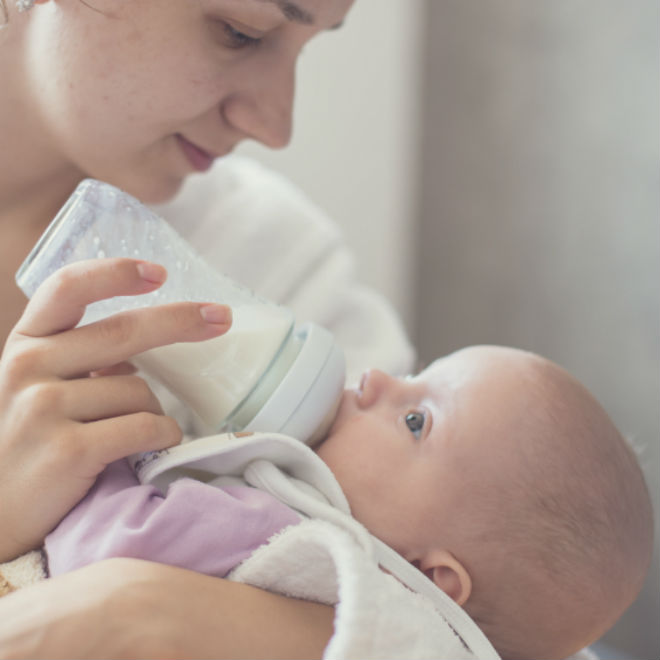
- When you have enough stored to equal the expected volume and a bit more, you can begin to plan a time to introduce a bottle.
- EXAMPLE for offering the first bottle:
- Your pediatrician suggests that your baby probably takes about 24 ounces a day.
- You know that he feeds between eight and 12 times a day.
- That means he could take anywhere from 2 to 3 ounces.
- You pump until you have a 2-ounce bottle and then have several 1/2 ounce bottles to equal at least three ounces or more saved.
- Choose a day that your primary support person will be available and a feeding time where baby tends to be more pleasant and patient for his feeding.
- Baby may accept a bottle more easily from someone other than you. He knows milk comes from you and may not understand why he’s not going there instead of to this foreign object.
- Thaw out the 2-ounce bottle in the refrigerator overnight.
- When baby begins to stir, place the bottle from the refrigerator in a bowl of warm water (bath temperature) or a bottle warmer while the person offering the bottle goes to get baby from his bed, changed and ready for the feeding.
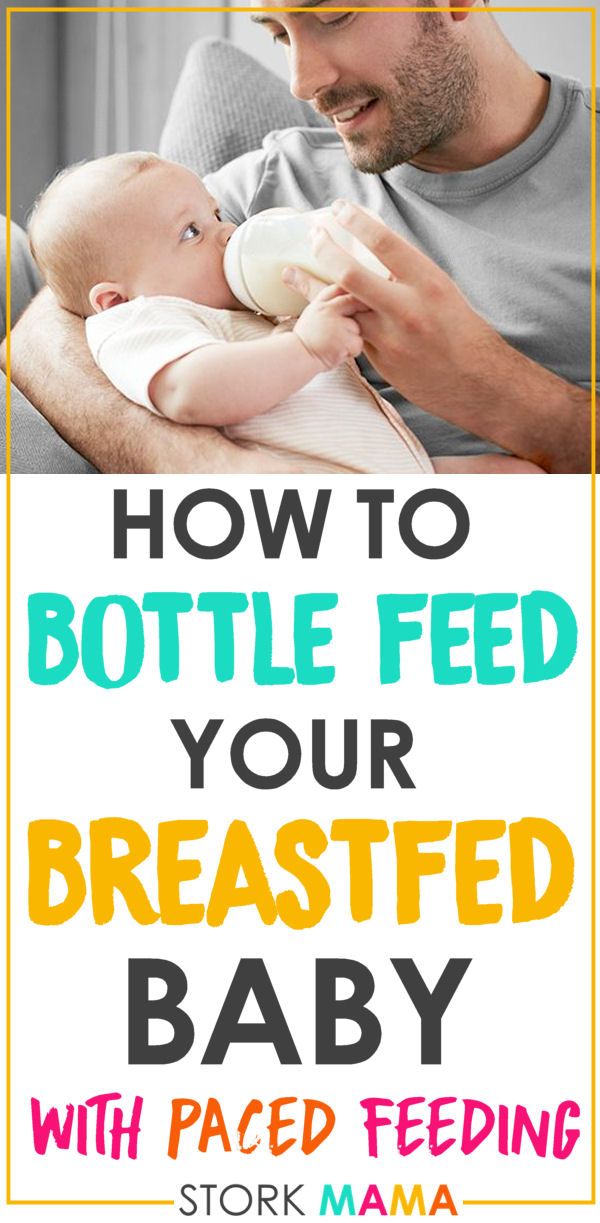
- Often it helps to run the bottle nipple under warm water, if it was also in the refrigerator, to make it more acceptable to the baby.
- Baby should be held in an upright, almost sitting, position that is similar to the position usually used by the support person.
- The warmed bottle should be held at an angle tilted just enough to fill the nipple to allow baby to keep control of when and how fast the milk comes.
- Tickle the baby’s mouth to encourage an open mouth then bring baby up onto the bottle nipple, aiming the nipple toward the palate.
- Some have found that it can help to have an article of clothing you have worn, like a nightgown or t-shirt, to place on their arm, shoulder, or chest where the baby can smell your scent.
- It is usually best if you are close but not present in the room during this first “experiment” with bottle feeding. Your baby is very wise and will wait for you to come feed her if she knows you are nearby.
Once the feeding is completed, you will pump to create a bottle equal to what the baby consumed. Remember that the baby is always better than a pump! If you do not pump as much as the baby took, it is more likely a pump issue than an issue of not enough milk. Just pump after another breastfeeding and add that amount to what you pumped to get the amount baby took.
Remember that the baby is always better than a pump! If you do not pump as much as the baby took, it is more likely a pump issue than an issue of not enough milk. Just pump after another breastfeeding and add that amount to what you pumped to get the amount baby took.
You will continue this pattern until you have enough milk stored in your freezer to get you through a normal work day plus a few extra for any hectic day at work where you may not have been able to pump as often. Plan to fully breastfeed for all feedings when not separated from your baby.
Working and Breastfeeding
Feeding Breastmilk From a Bottle
Pumping
Cleaning and Sanitizing Pumping Accessories
Hand Expressing
Published August 2018.
Baby won't take a bottle | Philips Avent
search support iconSearch Keywords
Home ›› What to do when your baby refuses a bottle
↑ top
any problems. If your breastfed baby refuses a bottle, don't worry. This is a common occurrence in many babies who are used to breastfeeding. Obviously, this can create certain difficulties for moms, especially if you need to return to work in the near future.
If your breastfed baby refuses a bottle, don't worry. This is a common occurrence in many babies who are used to breastfeeding. Obviously, this can create certain difficulties for moms, especially if you need to return to work in the near future.
3 Philips Avent products to help you bottle feed:
So why is your baby refusing to bottle and crying? There are many ways to quickly and easily teach a breastfed baby to a bottle. Here are important tips on what to do when your baby refuses a bottle.
Is the baby refusing the bottle? Take a step back
If your baby cries while bottle feeding, the first thing to do is to start over and rethink your feeding approach and technique. Try the following steps when bottle feeding your baby: [1]
- Lift and tilt your baby's head forward. Before inserting the pacifier into the baby's mouth, make sure that the baby's head is raised and tilted over his body to avoid choking: so that the baby does not choke and have the opportunity to burp during bottle feeding.
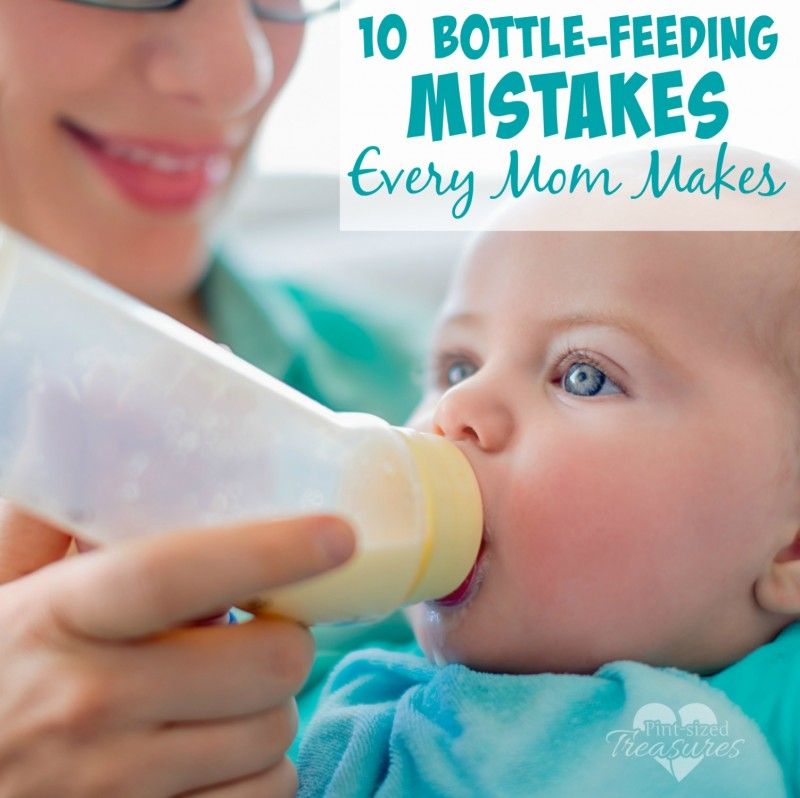
- Insert the pacifier. Bring the pacifier to the baby's lips and gently guide it into the baby's mouth. In no case do not try to press the nipple on the baby's lips and try to push it into his mouth. After touching the pacifier to the baby's lips, wait for the baby to open his mouth and take the pacifier.
- Hold the bottle at an angle. Tilt the bottle at an angle so that the nipple is only half full. So the child can eat at his own pace.
- Let the baby burp during and after feeding. It can be useful for a child to burp not only after feeding, but also approximately in the middle of the process. This will help reduce gas or tummy discomfort that your baby may experience from swallowing too much air.
- Stop in time, do not overfeed the baby. If the baby begins to turn his head away from the bottle or closes his mouth, then he is full and you need to stop feeding.
- Perhaps the flow of milk from the nipple to the baby is weak or, on the contrary, too fast, so he is naughty and refuses the bottle.
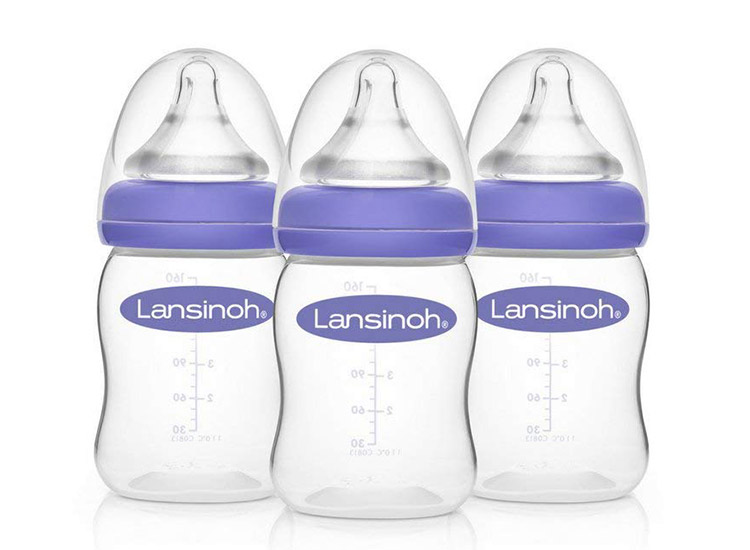 Try changing the nipple to a nipple with a different flow.
Try changing the nipple to a nipple with a different flow.
Other tips if your baby refuses the bottle
If you've followed the steps above and your baby still refuses the bottle, don't worry. There are other ways to help bottle feed your baby. Here are some simple tricks you can add to your bottle feeding process. [2]
1. Remind your child about mom.
Sometimes a child can be fed by someone other than his mother - dad, grandmother or, for example, a nanny. If your baby fusses while bottle feeding, try wrapping the bottle in something that smells like mommy, like a piece of clothing or some fabric. This will make it easier to feed the baby when the mother is not around.
2. Try to maintain skin contact while bottle feeding.
Some babies need contact with their mother, so try bottle feeding while leaning against you. However, some babies are better at bottle feeding when they are in the exact opposite position than when they are breastfed.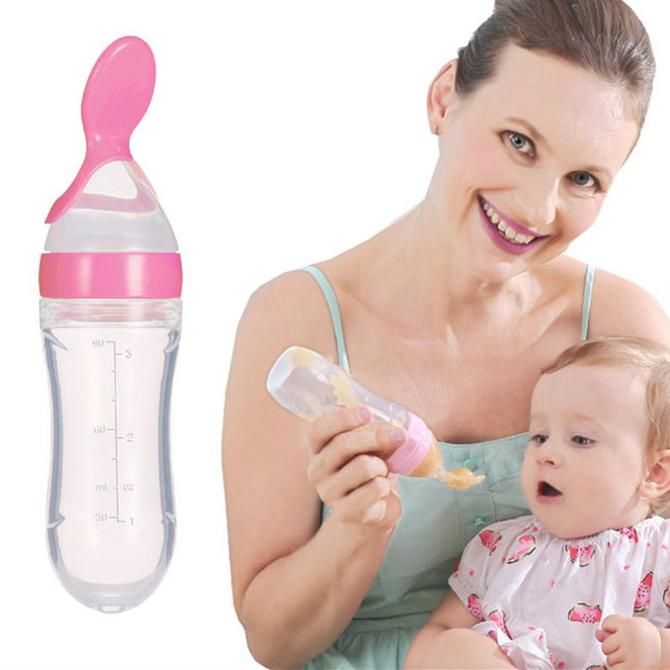 For example, there is a position with bent legs. Lay the child on your bent knees, facing you, pointing the child's legs towards your stomach. During feeding, the baby will be able to look at you and contact you in this way. If your baby refuses a bottle, experiment to see which works best.
For example, there is a position with bent legs. Lay the child on your bent knees, facing you, pointing the child's legs towards your stomach. During feeding, the baby will be able to look at you and contact you in this way. If your baby refuses a bottle, experiment to see which works best.
3. Move while feeding.
Sometimes all it takes to get your baby to take the bottle is a little wiggle or walk. The next time your baby starts crying while bottle feeding, try moving around a little rhythmically to calm him down.
4. Try changing the milk temperature.
If the baby still does not want to take the bottle, check if the milk in the bottle is too hot or too cold. Before feeding, put some warm breast milk on the inside of your wrist to check the temperature. Milk should be warm, but if it seemed hot to you, just place the bottle for a short while under a stream of cold water.
Choosing the right bottle for your baby If you plan to combine bottle feeding with breastfeeding, it is advisable to choose bottles with a nipple that will have a wide base as the bottle will grip closer to the breast.
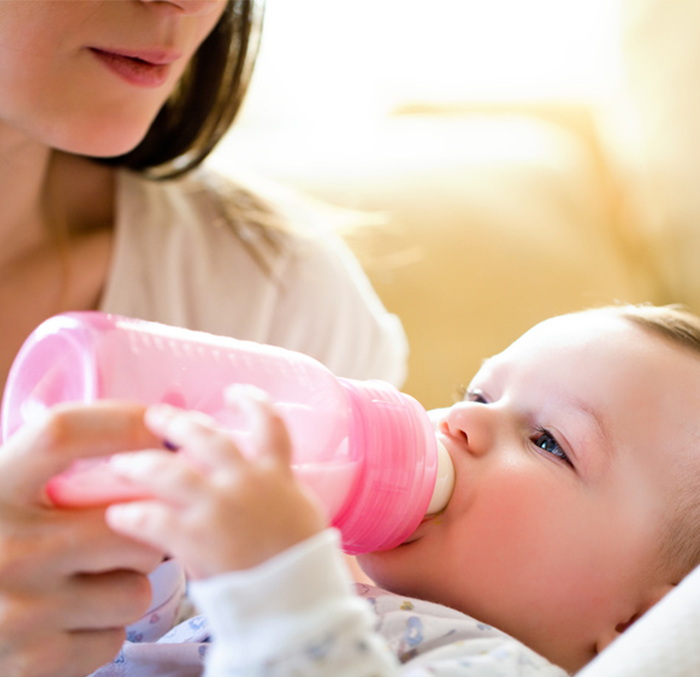 Also pay attention to the fact that the nipple is firm and flexible, the child must make an effort to drink from the bottle, as well as from the breast. Give preference to nipples with an anti-colic valve that vents air out of the bottle.
Also pay attention to the fact that the nipple is firm and flexible, the child must make an effort to drink from the bottle, as well as from the breast. Give preference to nipples with an anti-colic valve that vents air out of the bottle. Natural bottle allows you to combine breast and bottle feeding. 83.3% of babies switch from a Natural bottle to breastfeeding and back.*
If you choose a bottle for artificial feeding, traditional bottles are fine, but it is desirable that the nipple is made of a hypoallergenic material, such as silicone, has an anti-colic valve and did not stick together when bottle fed. In case your baby spit up often, then use special bottles with anti-colic and anti-reflux valve, which reduces the risk of spitting up and colic.
Bottle with unique AirFree valve reduces the risk of colic, gas and spitting up. With this bottle, you can feed your baby in an upright or semi-upright position to reduce spitting up. Due to the fact that the nipple is filled with milk and not air during feeding, the baby does not swallow air, which means that feeding will be more comfortable.
Both bottles are indispensable if you want to breastfeed, bottle feed or just bottle feed your baby.
“My baby refuses to breastfeed but bottle feeds – help!”
Sometimes a baby gets used to bottle feeding and refuses to breastfeed. Therefore, it is important to use bottles that are suitable for combining breastfeeding with bottle feeding. If, nevertheless, you are faced with the fact that the child refuses to take the breast, try using silicone nipple covers to make the transition from the bottle to the breast and back more imperceptible.
Remember that if you want to combine breastfeeding and bottle feeding, it is worth waiting at least a month before offering a bottle, so that you are lactating and have time to get used to each other and develop a breastfeeding regimen.
Breastfeed and bottle feed your baby with pleasure
Remember that it takes a while for your baby to get used to bottle feeding.![]() This is completely normal. If you have to go to work, be sure to set aside enough time to bottle train your baby beforehand.
This is completely normal. If you have to go to work, be sure to set aside enough time to bottle train your baby beforehand.
Remember that every child is different, so what works for one may not work for another. With a little time and patience, you will find out what works best for your baby when he refuses a bottle.
You will identify your child's unique needs. However, if your baby still refuses the bottle after all the steps above, check with your pediatrician.
Articles and tips from Philips Avent
References:
*O.L. Lukoyanova, T.E. Borovik, I.A. Belyaeva, G.V. Yatsyk; NTsZD RAMS; 1st Moscow State Medical University THEM. Sechenova, "The use of modern technological methods to maintain successful breastfeeding", RF, 10/02/2012 3 llli.org - The Baby Who Doesn't Nurse
llli.org - Introducing a Bottle to a Breastfed Baby
Baby+ app
Download the app and track your child's development and growth with trackers and save those special moments forever.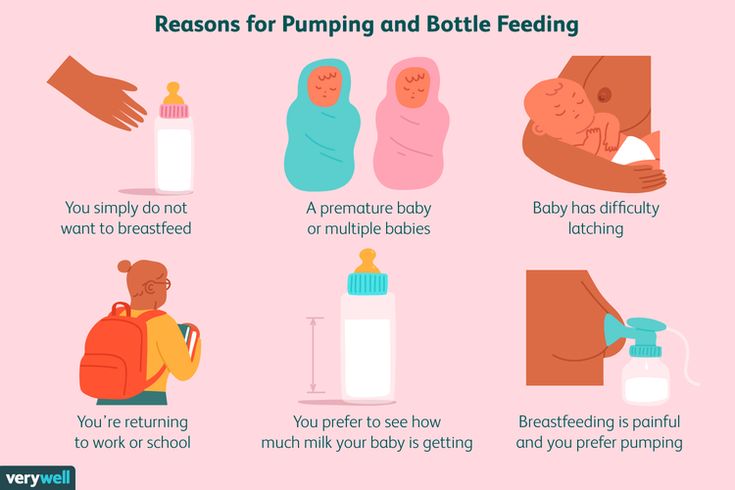
Download app:
You are leaving the Philips Healthcare (“Philips”) official website. Any links to third party websites that may be included on this site are provided solely as a convenience to you. Philips makes no warranties regarding any third party websites or the information they contain.
I understand
You are about to visit a Philips global content page
Continue
You are about to visit the Philips USA website.
I understand
BREASTFEEDING IN QUESTIONS AND ANSWERS - GAU RS (Y) "Medical Center of Yakutsk" mixtures. Manufacturers, in order to profitably sell their products, spend huge amounts of money on colorful advertising. It seems that the mixture is very easy to use - just dilute the bottle and there will be no problems!
In fact, no formula can replace breast milk. Mother's milk contains over 150 ingredients, most of which cannot be artificially synthesized. It contains all the substances necessary for the baby's body in a form that is ideal for a newborn. In addition, the composition of milk changes from day to day, from month to month, as the baby grows.
It contains all the substances necessary for the baby's body in a form that is ideal for a newborn. In addition, the composition of milk changes from day to day, from month to month, as the baby grows.
The newborn receives from the mother's milk digestive enzymes, hormones and substances responsible for protecting the child from infection and allergies. For example, a child's body produces only 2/3 of thyroid hormones, and 1/3 is obtained from mother's milk. But this hormone is responsible for the formation of intelligence!
Breastfeeding develops the muscles of the tongue and mouth and promotes speech development.
Can bottle-feeding replace the feeling of love and protection that a child experiences at its mother's breast? No breast milk substitute carries information about love and tenderness!
Therefore, breast-fed children are friendlier, find better contacts with others and the opposite sex, and are less likely to suffer from drug addiction and alcoholism.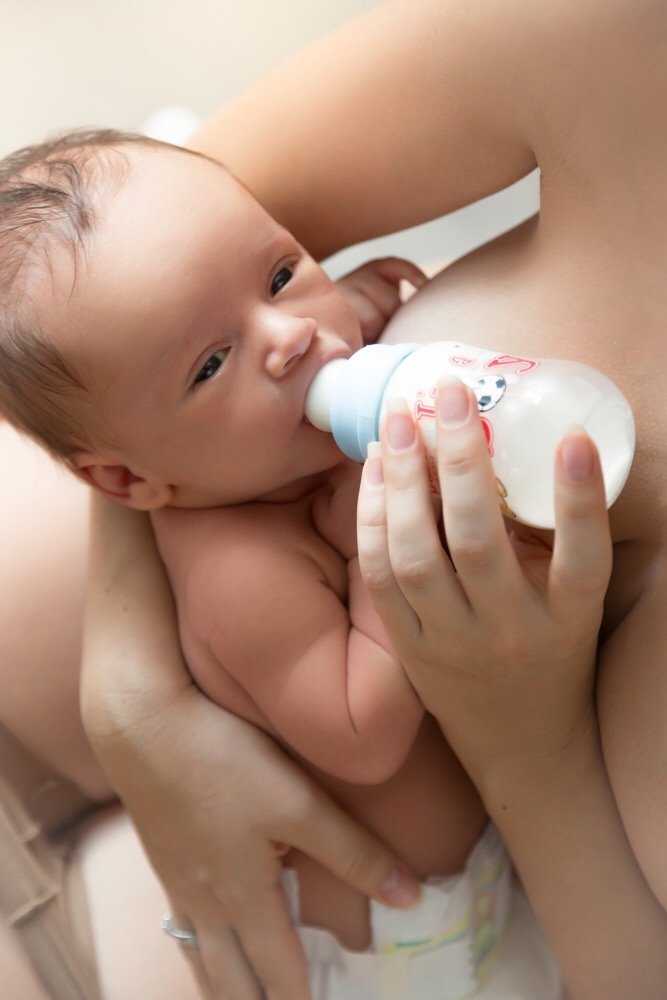 They are 5-6 times less likely than artificers to suffer from intestinal infections, 4 times less often - colds and allergies, 2 times less often - liver, kidney, diabetes.
They are 5-6 times less likely than artificers to suffer from intestinal infections, 4 times less often - colds and allergies, 2 times less often - liver, kidney, diabetes.
HOW TO START BREASTFEEDING?
It is very important that the baby is placed on the mother's stomach immediately after birth. Skin-to-skin contact allows the child to reconnect with his mother, because after nine months spent in a cozy home, he enters a new, alien and cold world.
Eye contact is very important for establishing an emotional connection and it is important that the first face that the baby sees is the face of mom or dad.
Early skin contact allows the baby's skin to become colonized with beneficial skin microorganisms and the baby becomes much more resistant to most germs introduced from other sources.
It is important that within 30 minutes after birth, the baby is attached to the breast and receives the first drops of colostrum. Colostrum contains antibodies against most microbes and is a kind of vaccination that protects the baby from many diseases.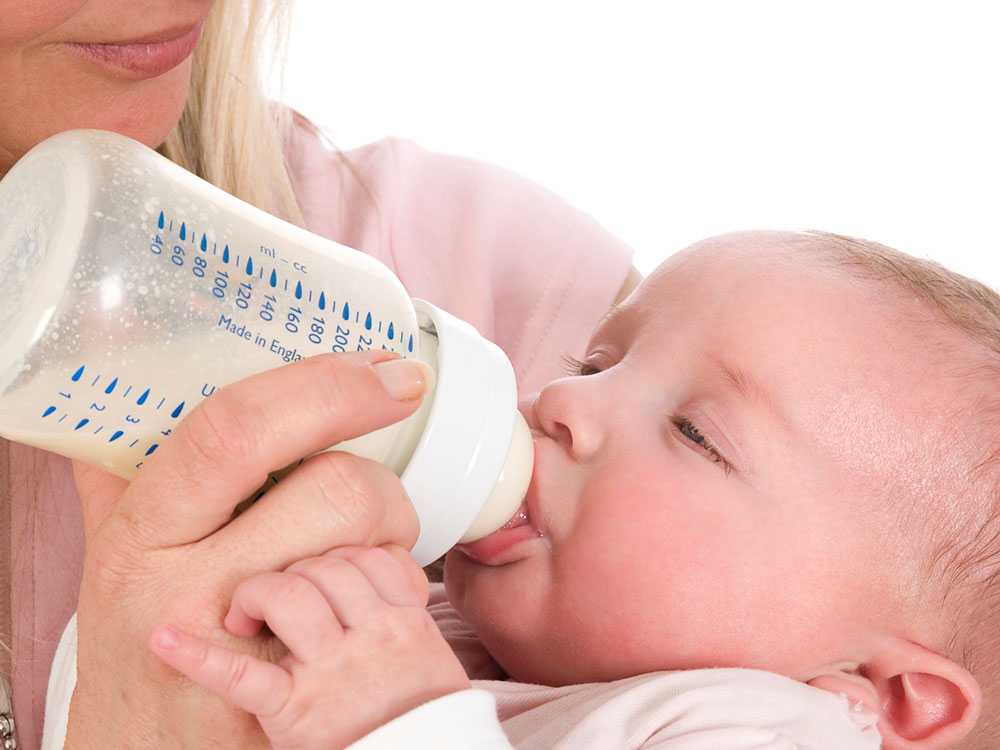 It also promotes the maturation of the newborn's intestines and the release of meconium, the thick primordial feces.
It also promotes the maturation of the newborn's intestines and the release of meconium, the thick primordial feces.
WHEN IS MILK AVAILABLE?
During the first 3-4 days, colostrum is secreted from the nipple. Normally, it is 50-70 ml per day and this is exactly the amount that the baby needs. A larger amount of food at this age can cause disruption of the gastrointestinal tract.
A child is born with a 5-day supply of food, and within 4-5 days he is not threatened with hunger. At this time, there is a physiological loss of body weight, which can reach 10%. This is the normal state of the baby during "adult" life.
SHOULD THE BABY BE FEEDED ON ONE OR TWO BREASTS?
It depends entirely on the needs of the child. In the first few days. When milk is still low, give both breasts at every feed. Frequent sucking will speed up milk production. Then, when the milk arrives, follow the needs of the baby. When one breast is enough for a feed, simply alternate breasts, starting the first feed on the right breast and the next on the left.
When one breast is enough for a feed, simply alternate breasts, starting the first feed on the right breast and the next on the left.
Many mothers constantly feed their babies with both breasts at every feed. However, you need to make sure that the baby has completely sucked one breast before offering the other. Otherwise, the baby will receive only the first, more liquid portions of milk and receive less fat.
DOES A BABY NEED A PATCH?
If the baby is breastfed, he does not need bottles and pacifiers. The mechanism of sucking nipples and breasts is very different. The nipple must be sucked, and milk must be squeezed out of the breast. If the baby tries a pacifier or pacifier, it can reinforce the wrong sucking mechanism and the baby will refuse the breast.
Therefore, if you need to give your baby milk or medicine, you should use a small cup or spoon. Do not be afraid, even very young children in the maternity hospital drink perfectly from a cup.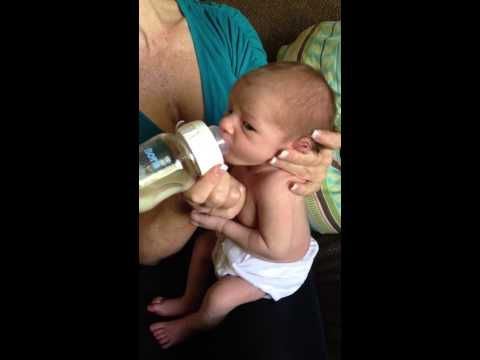
The fact that the baby sucks his fingers or smacks his lips does not mean that he needs to suck something between feedings. There is no physiological need for a pacifier.
WHAT TO DO IF THERE IS NOT ENOUGH MILK?
Above all, don't panic and grab the formula box, because the amount of milk can be increased. Firstly, apply the baby to the breast on demand, at least 10-12 times a day. Night feedings are also required.
Secondly, never give your baby a pacifier or a bottle, he may refuse to breastfeed. Thirdly, since feeding a child is hard work, shift most of the housework to relatives, and only take care of the baby yourself. You need to rest and sleep.
An increase in the amount of milk is facilitated by a bath or a warm shower on the mammary glands and taking 1-2 glasses of any liquid 10-15 minutes before feeding. A neck and back massage will also help.
Pharmacies sell special lactogenic teas, such as Vitalakt.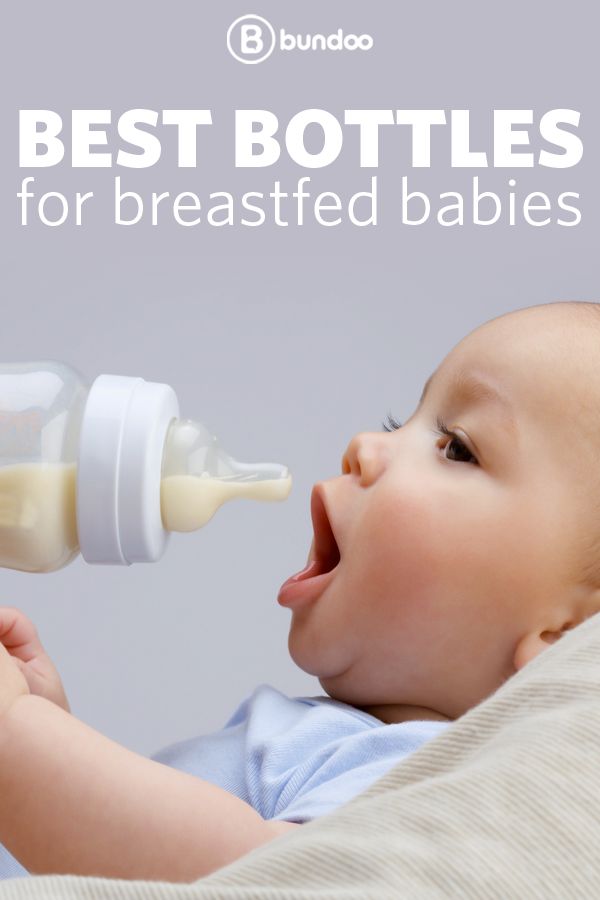
As a rule, the increase in milk occurs by 7-10 days, so you will need patience.
DO NOT USE THE MIXTURE WITHOUT YOUR PHYSICIAN ADVICE!!!!
WHY DO CHILDREN CRY?
Many mothers believe that if the baby cries, is restless, or often wants to breastfeed, then this indicates a lack of milk.
However, babies can cry for a variety of reasons - they may be cold, hot or wet, or they may be wrapped too tightly in a diaper or have uncomfortable clothes. The child often worries if he has manifestations of allergies and itches. Many children, especially boys, suffer from colic until the age of 3-4 months.
If the child is gaining weight well and urinating 8 or more times a day, then the reason for crying is something else. Try changing your child's clothes, carrying him in your arms, massaging his tummy. If you can't determine the cause of your crying, see your doctor.
CAN A BABY REFUSE TO BREAST
The most common reason for not breastfeeding is pacifier or pacifier feeding. Having eaten at least once from a bottle, the child tries to suck on the breast like a pacifier, and not squeeze milk out of it. In this case, milk does not come from the breast, the baby is angry and refuses to suckle the breast.
Having eaten at least once from a bottle, the child tries to suck on the breast like a pacifier, and not squeeze milk out of it. In this case, milk does not come from the breast, the baby is angry and refuses to suckle the breast.
The child is sensitive to unfamiliar surroundings. If the mother and baby are in an unfamiliar house or there are too many people around, the baby becomes restless and may also refuse to breastfeed. The child refuses the breast if it hurts to suck, for example, if there is thrush in the mouth, teeth are cut, or the nose is blocked.
Babies orient themselves to the smell of milk and may refuse to breastfeed if the mother wears perfume, deodorant or strong-smelling soap. Some foods, such as garlic and spices, can change the taste of milk.
Do not give your baby a pacifier or pacifier!!!
HOW LONG DOES A BABY NEED BREAST MILK?
Russian proverb says: “The first year a mother feeds her child for health, the second year for the mind.